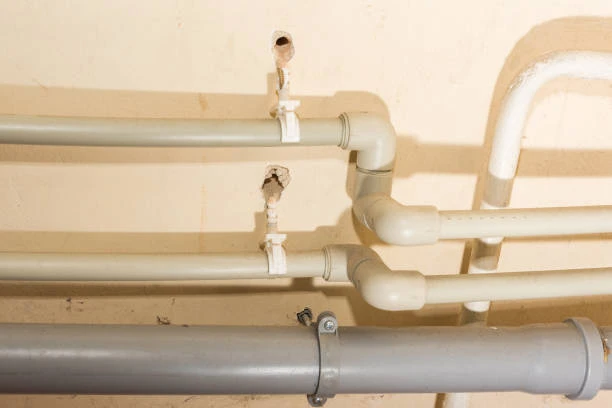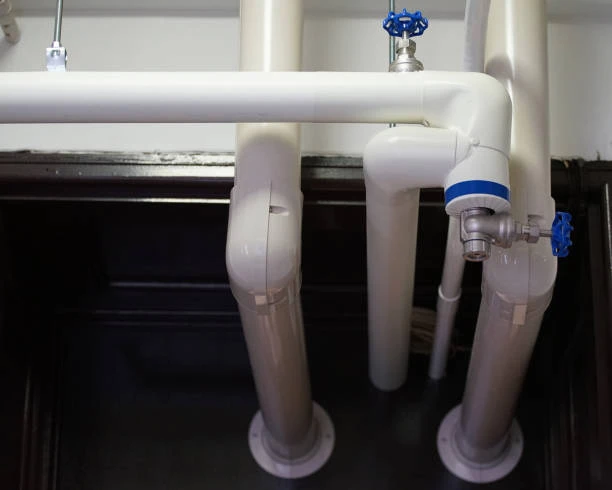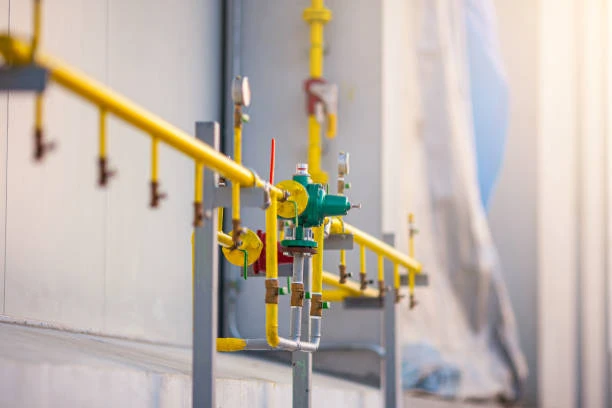1. Introduction to CPVC and PVC Pipes
CPVC and PVC are widely used in fire protection systems. CPVC, or chlorinated polyvinyl chloride, offers superior fire resistance and durability. PVC, or polyvinyl chloride, works well in low-temperature and non-critical applications. Comparing CPVC versus PVC shows CPVC excelling in high-temperature and pressure scenarios. For instance, CPVC performs better in fire sprinkler systems due to its ability to resist heat and maintain structural integrity.
2. Fire Resistance and Safety
CPVC pipes excel in fire resistance due to their high ignition temperature and self-extinguishing properties. PVC, while cheaper, deforms under high heat and releases toxic fumes when burned. For example, in commercial fire sprinkler systems, CPVC ensures reliable water flow during fires. Comparing CPVC versus PVC, CPVC clearly provides safer options for critical fire protection applications, especially in buildings with strict safety standards.
3. Temperature and Pressure Tolerance
CPVC pipes handle higher temperatures and pressures, making them ideal for fire protection. CPVC withstands temperatures up to 93°C, while PVC softens above 60°C. For instance, CPVC pipes in warehouses maintain performance under high-pressure sprinkler systems. Comparing CPVC versus PVC, CPVC consistently outperforms PVC in environments requiring temperature and pressure resilience.
4. Durability and Longevity
CPVC pipes offer exceptional durability, resisting corrosion, scaling, and chemical damage. PVC, in contrast, degrades faster when exposed to UV light or chemicals. For instance, CPVC pipes in outdoor fire protection systems remain intact longer. Comparing CPVC versus PVC highlights CPVC’s superior lifespan and reliability, reducing replacement and maintenance costs over time.
5. Ease of Installation
CPVC pipes simplify installation with solvent welding and require fewer tools. PVC, though lightweight, needs additional fittings and may crack during installation. For example, fire protection systems in hospitals benefit from CPVC’s faster installation process. Comparing CPVC versus PVC, CPVC proves more efficient and less prone to installation-related issues, saving time and labor costs.
6. Cost-Effectiveness in Fire Protection
Although CPVC costs more initially, its longer lifespan and low maintenance reduce overall expenses. PVC, while cheaper upfront, requires frequent replacements in demanding applications. For example, high-rise buildings using CPVC fire sprinkler systems report significant savings over time. Comparing CPVC versus PVC, CPVC provides better value for money in long-term fire protection system investments.
7. Environmental Impact and Safety Standards
CPVC aligns with modern sustainability practices due to its durability and safety standards. PVC pipes, while recyclable, often fail to meet stringent fire protection codes. For example, CPVC pipes comply with NFPA standards, ensuring safety in commercial buildings. Comparing CPVC versus PVC, CPVC supports environmental goals and meets global safety requirements, making it the preferred choice.
8. Wide Range of Applications in Fire Protection
CPVC pipes cater to diverse fire protection needs, including sprinklers, water supply, and hydrant systems. PVC suits non-critical applications but lacks reliability under high temperatures. For example, CPVC pipes protect sensitive areas like data centers and schools. Comparing CPVC versus PVC, CPVC proves more versatile and dependable in various fire safety scenarios.
Conclusion
CPVC pipes provide unmatched benefits for fire protection systems. Their superior fire resistance, durability, and compliance with safety standards make them indispensable. Comparing CPVC versus PVC demonstrates CPVC’s dominance in critical fire safety applications. For long-term performance and reliability, CPVC remains the top choice for modern fire protection systems.
IFAN Products international standards
IFAN products strictly adhere to a comprehensive range of international standards, encompassing ISO 15874, EN 15874, ASTM F2389, DIN 8077/8078, GB/T 18742, NBR 15884, ISO 15494, EN ISO 15494, GB/T 19472, NBR 15494, ASTM 2846 (501), DIN 8079/8080 (502), ASTM F441/F441M SCH80 (503), DIN (504), DIN (505), GB/T 18993, AS/NZS 1477, CSA B137.6, NSF/ANSI 14, TIS 17-2532/1131-2535, BS 3505, BS 4346 (801), ASTM D1785 SCH40 (802), ASTM D1785 SCH80 (803), DIN (804), GB (805), GB (806), GB(901), DWV(902), ASTM D2665 (903), along with ASTM D2241, D2665, D2729, and F441/F441M series, ISO 1452, EN ISO 1452, DIN 8061/8062, GB/T 10002, AS/NZS 1477, JIS K6741, CSA B137.3, and other national and industry norms.
Connect
IFAN is a Chinese manufacturer of plastic pipes, fittings and valves with 30 years of experience. If you are interest in IFAN copper fittings, copper valves, plastic pipes and fittings, please contact us. IFAN offers you a variety of standard pipes to meet your specific needs. Click below to learn more about IFAN’s wide range of affordable and cost-effective valve products and piping system related products.
We will reply your email or fax within 24 hours.
You can call us at any time if there is any question on our production.
For more information,pls visit our webside https://waterpipefitting.com/
Pls Mailto: [email protected]
Whatsapp: + 86 19857948982














Recent Comments